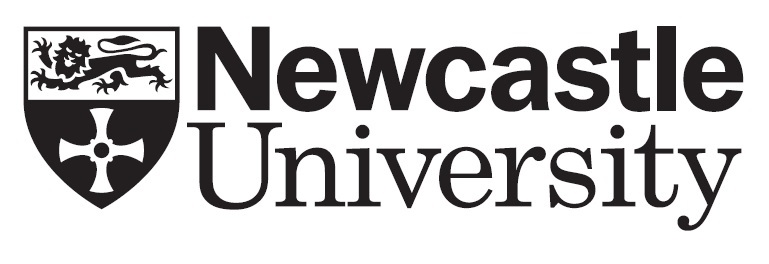Troubling Borders: Art worlds in sites of conflict
Edwin Coomasaru, Courtauld Institute of Art
Sarah Kelleher, University College Cork
Rachel Warriner, Courtauld Institute of Art
Borders, bound up with the politics of gender, race, sexuality and sectarian identity, are troubling. There is a long history of anxiety about corporeal or geopolitical boundaries which has led to their framing in our current political moment as sites of crisis. When contested, borders can become threatening, as seen in recent rhetoric around migration and calls for militarised walls. Conventionally understood as relating to nationhood, borders exist in broader terms between communities and bodies, and thus invite tropes of complexity ‘typically assembled under the prefixes inter, trans, bi and cross’ (Michaelson and Johnson, Border Secrets, p.10). As such, the border as an intellectual entry point signals a locus of possibility, creativity and complex alliance as well as antagonism and complicity. While art history has often explored those individual practices that seek to re-think the borders that define personal and political experience, what has been less considered is the ways in which borders impact the operation of art worlds. Art worlds, here understood in Howard Becker’s terms as the networks and communities who facilitate the production of art according to shared understandings of its value, are also impacted by borders national, social and aesthetic. Thinking about troubled borders, this panel invites papers that will consider how art worlds are made under contested conditions, how focus on particular identities offers productive and supportive opportunities for creative work for anti-racist, feminist and queer communities, and how identifying across national borders helps develop new forms of collectivity.
Speakers
Black British Art: Negotiating the borders of ‘Britishness’
Jennifer Sarathy (CUNY Graduate Center, New York)
Collective Re-worlding: Queer curatorial models
Quinn Garrison (The University of Edinburgh)
Across Borders and Firewalls: Collective action, community and Electronic Civil Disobedience at the US/Mexico border
Elara Kyffin Shurety (The Courtauld Institute of Art)
Iranian Art and the Global: Cementing and circumventing the border
Leili Sreberny-Mohammadi (NYU)
Northern Ireland on the Borders of Documentary and Abstraction
Catherine Spencer (University of St Andrews)
Destroying the Art Object to Revel in the Debris: An exploration of Maria Kulikovska’s Army of Clones and Let Me Say: It’s Not Forgotten
Kalyna Somchynsky (University of Alberta Edmonton, Canada)
Click here to download this session's abstracts or view below
Black British Art: Negotiating the borders of ‘Britishness’
Jennifer Sarathy (CUNY Graduate Center, New York)
While borders determine territorial and symbolic boundaries between nations, they equally mediate citizenship and belonging within the nation itself. Following the fall of Empire, debates over borders and national identity in the United Kingdom centred upon the migration of non-white Commonwealth citizens to Britain’s urban centres. A racially coded crisis of ‘Britishness’ was reflected by the 1962 and 1968 Commonwealth Immigration Acts, and by racist institutional and sociopolitical boundaries within British cities themselves. Focusing on aesthetic practices and early Black British art, this paper examines how black cultural producers responded to the exclusionary politics of Britain in the 1960s and 1970s, creating ‘subaltern counterpublics’ that contested the territorial and symbolic formation of British identity. First, this analysis explores collective and networked forms of self-representation, from the Caribbean Artists Movement to Black publishers such as New Beacon Books and Bogle-L’Ouverture. These examples demonstrate the building of alternative intellectual networks that connected Britain, the Caribbean and Africa, challenging national cartographies and physical borders. Second, it considers site-based practices of artists and activists working within public spaces in 1960s and 1970s London, assessing how the Hyde Park Speakers’ Corner, public protests in the streets and the Notting Hill Carnival asserted collective Black British identities. Together, these examples demonstrate how Black British artists and activists expanded the public sphere, challenging the social and political constitution of ‘Britishness’ and the internal and external borders that shaped national identity in the decades following the Second World War.
Collective Re-worlding: Queer curatorial models
Quinn Garrison (The University of Edinburgh)
In this paper, I use Irit Rogoff’s Smuggling (2008) as a methodology to examine how the queering of space and time can be used as strategies of resistance to disrupt the existing power structures that shape current definitions of self, rooted in colonialism, patriarchy, cis-sexism and heteronormativity. The undefined and unmoored nature of queerness allows it to be at once local and global, creating materially and socially interconnected networks that trouble accepted conceptions of time and space. I present queerness as an embedded positionality, a non- normative perspective from which to view the world; one which is dyssynchronous with its spatial and temporal organisation, in order to critique the present and imagine new futures. I investigate the possibilities of creating ‘queer space’ and its strategic use in challenging institutionalised heteronormativity and cis-sexism as theorised by Jack Halberstam (2005). I also draw on concepts of temporality, displacement and futurity as foregrounded by Jose Esteban Munoz (2009), Michel Foucault (1984), Judith Butler and more recently supported by Paul Preciado (2013).
My research is grounded in two case studies: Auto Italia South East Collective’s ‘Dream Babes’ project and Embassy Gallery’s ‘Making Ground’. I use these as examples of queer curatorial models that seek to create a sense of solidarity amongst participating members of the queer community, bringing queer people together in a safe space where they have the freedom, space and support to form new alliances, imagine alternatives models for the future and develop tools for reconfiguring dominant cultural codes.
Across Borders and Firewalls: Collective action, community and Electronic Civil Disobedience at the US/Mexico border
Elara Kyffin Shurety (The Courtauld Institute of Art)
Electronic Civil Disobedience (ECD) was first conceptualised by the Critical Art Ensemble (CAE) in 1996, who viewed the streets as ‘dead capital’, and instead posited that resistance must replicate capitalist structures by becoming increasingly spread out, liquid, electronic and nomadic. CAE proposed a means of collective action and artistic production that fought ‘decentralized power’ through ‘decentralized means’ (1996, CAE p.23). Through looking at Electronic Disturbance Theater’s (EDT) FloodNet acts concerning the US/Mexico border, 1998–2008, and Ian Alan Paul’s 2011 Border Haunt, this paper questions notions of the ‘collective’ and ‘community’ in net-based border art that employed ECD.
While their tactics ranged from virtual sit-ins to staging a symbolic haunting of data ghosts, both practices facilitated actions that were taken part in by individuals worldwide, with participants simultaneously isolated, by their location, and together, all part of the same singular action. Through staging new forms of collectivity across borders using networked technologies, these works highlight the participatory and collective nature of border enforcement itself, targeting BlueServo and Minutemen organisation websites. Considering these various collectives and publics at play in the construction and enforcement of the border, this paper will draw out why acts of ECD were so tied to border art. It will further consider the limits of these communities and collectives, whether these ephemeral actions merely gestured towards a new form of collectivity across borders, or genuinely fostered it. Finally, it will reflect on the decline of ECD, in the context of a heightened focus on borders in contemporary art practice and activism.
Iranian Art and the Global: Cementing and circumventing the border
Leili Sreberny-Mohammadi (NYU)
The Middle East is often described as a region in consistent conflict. In Iran, this conflict is not necessarily urgent or immediate but rather is ongoing and insipid, exasperated by unrelenting sanctions implemented by the UN, the EU and the US government which seek to curtail the flow of people, goods and money in and out of Iran. This paper outlines the way the circulation of Iranian art across physical and virtual borders is impacted by international legal and political frameworks. I examine how the ‘border’ between Iran and the world is cemented through these mechanisms. At the same time, I consider how this border is circumvented by artists and gallerists using creative, surprising methods that often occupy a legal grey area. Finally, I consider how this isolation also becomes an organising rubric for editorial and curatorial content on Iranian artists. Employing Patricia Spiers’ notion of the ‘border fetish’, I question how the material realities of the lives of Iranian artists can be discussed while avoiding a singular preoccupation with their predicament. In this way, I bring texture to discussions of the globalisation of art by drawing out ways in which it is uneven and inconsistent.
Northern Ireland on the Borders of Documentary and Abstraction
Catherine Spencer (University of St Andrews)
During the 1970s and 1980s, Rita Donagh addressed the Northern Ireland conflict and its mediatisation through combining the abstracting tools of mapping and diagramming with collaged newspaper and television images, exemplified by a series examining the H-block architecture of HM Maze Prison. Donagh’s work has polarised critics: Edward Lucie-Smith concluded it achieved only ‘a generalized, elusive melancholy’ (1980, Art in the Seventies p.97); others have accused Donagh of partisanship. Neither represents an adequate assessment of a practice which foregrounds the complex, intractable violence instigated by and around the Irish border. This paper situates Donagh’s Maze Prison works within a network of artistic perspectives on the so-called ‘troubles’ from outwith Northern Irish and Irish communities, including Conrad Atkinson’s Northern Ireland 1968–May Day 1975 (1975–6), Cinema Action’s People of Ireland! (1971), Berwick Street Film Collective’s Ireland Behind the Wire (1974) and coverage in Camerawork magazine. While these projects intended to counter simplistic and imperialist media narratives, and emerged from cultures of cross-class and anti-racist solidarity, they nonetheless became embroiled in conflicts of their own, as the controversy around the 1978 exhibition Art for Society: Contemporary British Art with a Social or Political Purpose on its transfer from Whitechapel to the Ulster Museum exemplifies. Equally, works circulated in galleries, magazines and the cinema sat in uneasy but dynamic relation to sectarian graffiti on the Belfast and Derry streets, in which the H-block motif figured prominently. This framework prompts us to re-think Donagh’s fusion of documentary with abstraction as embedded in the acts of border creation and crossing.
Destroying the Art Object to Revel in the Debris: An exploration of Maria Kulikovska’s Army of Clones and Let Me Say: It’s Not Forgotten
Kalyna Somchynsky (University of Alberta Edmonton, Canada)
On 9 June, 2014, casts of artist Maria Kulikovska’s body composing the work Army of Clones stood in the garden of Izolyatsia Art Centre in Donetsk, Ukraine where they faced the gunfire of separatist forces as civil war with foreign military intervention raged in the region. Five years later, with war and instability continuing to ravage Ukraine, Kulikovksa would walk through a forest nude, rifle in hand, and shoot soap casts of her body in the performance Let Me Say: It’s Not Forgotten.
In this paper, I will question the relationship between what an act of violence signifies when the signifier refers to a concrete individual, what is attacked beyond the individual, and how the act of violence can be interpreted when aimed at the female nude. For Kulikovska, the links between the (in)voluntary destruction of her artwork, the body, and war are personal as she has been banned from her home of Kerch in Crimea following its annexation by Russia. This raises questions about the employment of destruction in art to navigate trauma and survival in times of conflict in a productive capacity. I argue that the ongoing oscillation of destruction and production evident within Kulikovska’s practice opens space between these dualities where new meanings for the art object may be gleaned. My analysis will be rooted in interviews I conducted with Kulikovska, psychoanalysis and considerations for applying feminist theory in a post-Soviet environment.
|
|
|
|
|
|
Supported by
Conference Sponsors
![]()
Sponsored by
ASSOCIATION FOR ART HISTORY
![]()
Terms & Conditions
![]()


